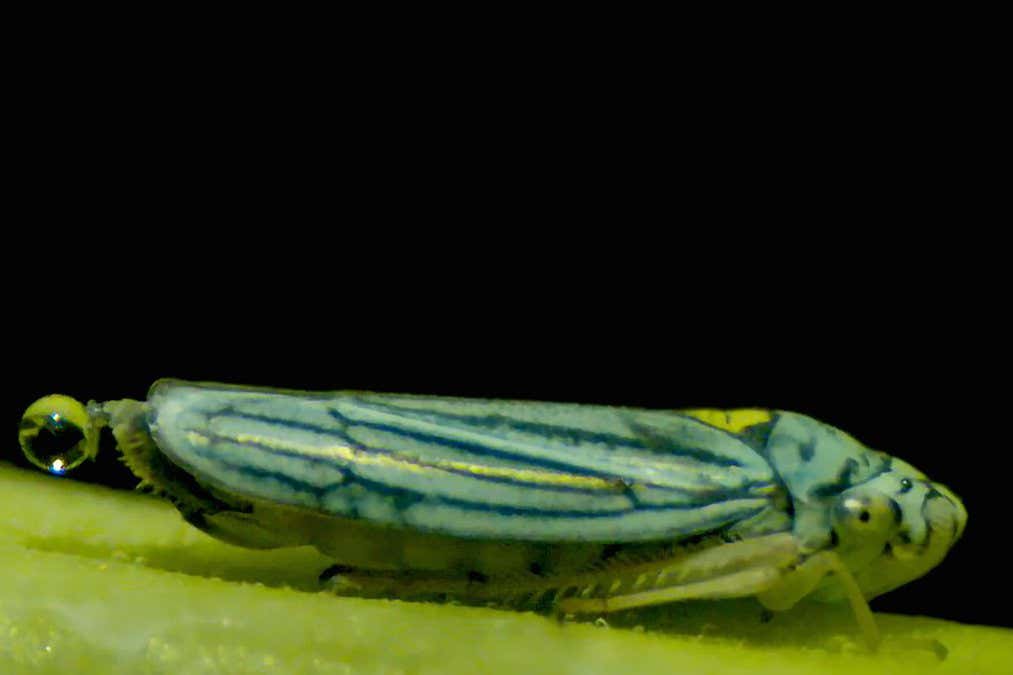Microscopic Marvels: How Tiny Insects Urinate With Force
Insects, those tiny creatures that often go unnoticed, possess a remarkable array of adaptations for survival. Among these, their unique excretory systems are particularly fascinating, especially considering the sheer force with which some insects urinate. This article delves into the microscopic marvels of insect urination, exploring the mechanics behind this powerful process and its ecological significance.
The Tiny Powerhouses: Insect Excretory Systems
Unlike humans and other mammals with complex kidney systems, insects utilize a simpler, yet highly efficient, excretory system. This system primarily consists of Malpighian tubules, long, thin tubes that extend from the insect's gut into the hemolymph (insect blood). These tubules actively transport waste products, including nitrogenous waste (primarily uric acid), from the hemolymph into the gut. The waste then mixes with indigestible food matter and is eliminated through the anus.
However, the story doesn't end there. For many insects, particularly those with limited access to water, efficient water conservation is crucial. This is where the surprising power of their urination comes into play.
The Mechanics of High-Pressure Urination
The key to understanding the force behind insect urination lies in the pressure gradient within their bodies. The Malpighian tubules create a hyperosmotic environment within the gut, drawing water from the hemolymph. This creates a build-up of pressure, effectively pressurizing the waste products within the gut. When the insect releases its waste, this built-up pressure results in a forceful expulsion.
Think of it like a tiny, biological pressure washer. This forceful urination serves several crucial purposes:
- Waste removal: Efficiently clears waste products from the insect's system.
- Water conservation: Minimizes water loss by concentrating waste and expelling it under pressure. The concentrated uric acid requires minimal water for elimination.
- Hygiene: Helps keep the insect's body clean and free from harmful bacteria.
- Defense mechanism: In some species, the forceful expulsion of waste can even serve as a deterrent to predators.
Examples of Powerful Insect Urination
While the exact pressure varies across species, several insects exhibit particularly noteworthy examples of powerful urination:
- Grasshoppers: Known for their forceful expulsion of uric acid crystals, often visible as a small white cloud.
- Certain species of beetles: Their waste expulsion can even reach impressive distances relative to their body size.
- Aphids: While not as forceful as grasshoppers or beetles, aphids still demonstrate efficient water management through concentrated waste elimination.
Ecological Significance
The efficient excretory systems of insects play a significant role in their ecological niches. Their ability to conserve water and efficiently eliminate waste contributes to their survival in diverse habitats, from arid deserts to lush rainforests. Furthermore, the waste products themselves play a role in nutrient cycling within ecosystems.
Conclusion: A Tiny Wonder of Nature
The seemingly mundane act of urination in insects reveals a fascinating world of microscopic marvels. The power and efficiency of their excretory systems highlight the incredible adaptations that have allowed these tiny creatures to thrive across the globe. Further research into insect physiology continues to unveil the intricate mechanisms and ecological significance of these powerful little powerhouses. Understanding these processes not only enhances our knowledge of insect biology but also provides insights into potential applications in fields such as biomimicry and water management technologies.
Further Reading:
Keywords: insect urination, Malpighian tubules, insect excretion, insect physiology, biological pressure, water conservation, insect adaptations, excretory system, uric acid, grasshopper, beetle, aphid, microscopic marvels, ecological significance, biomimicry.

